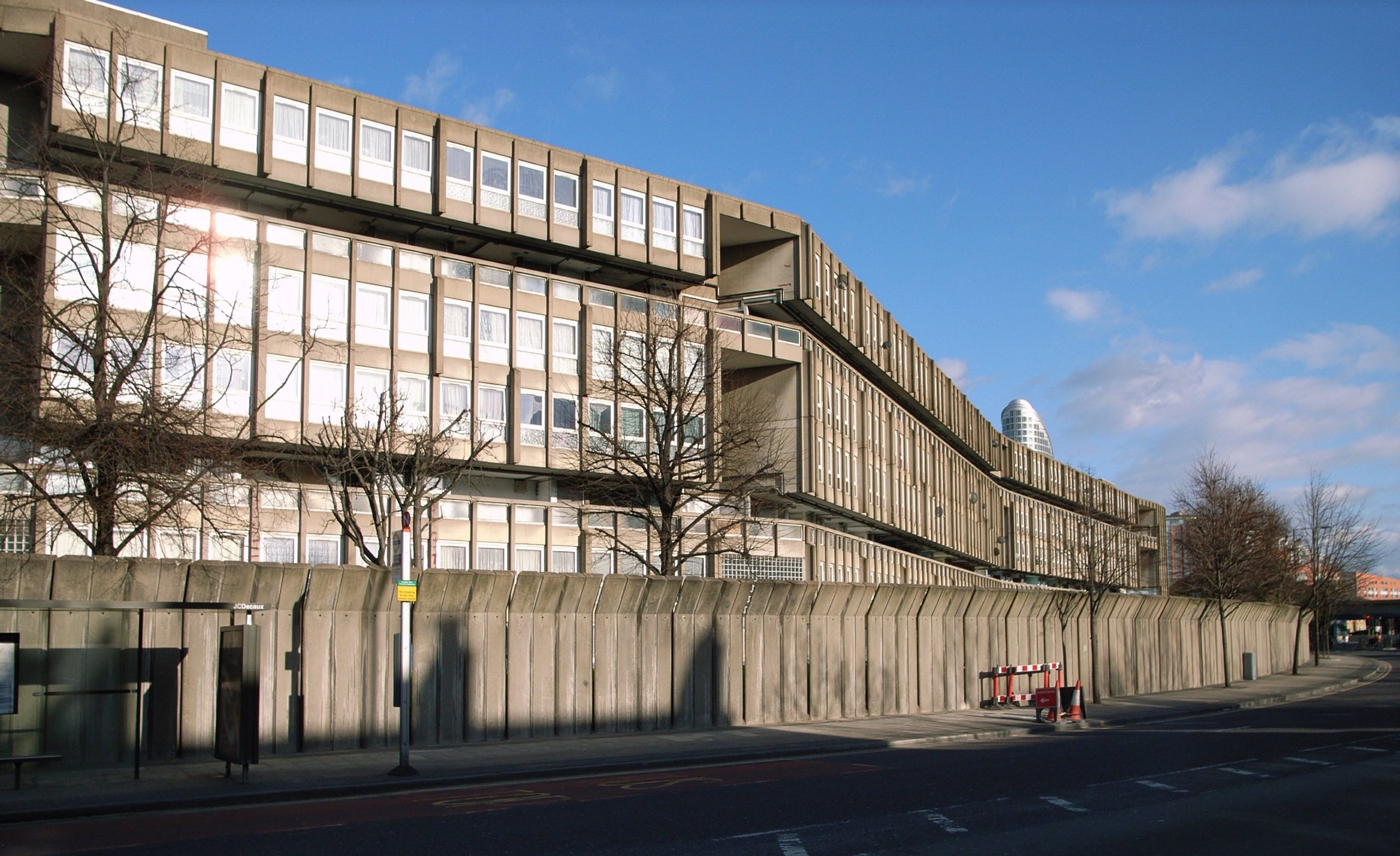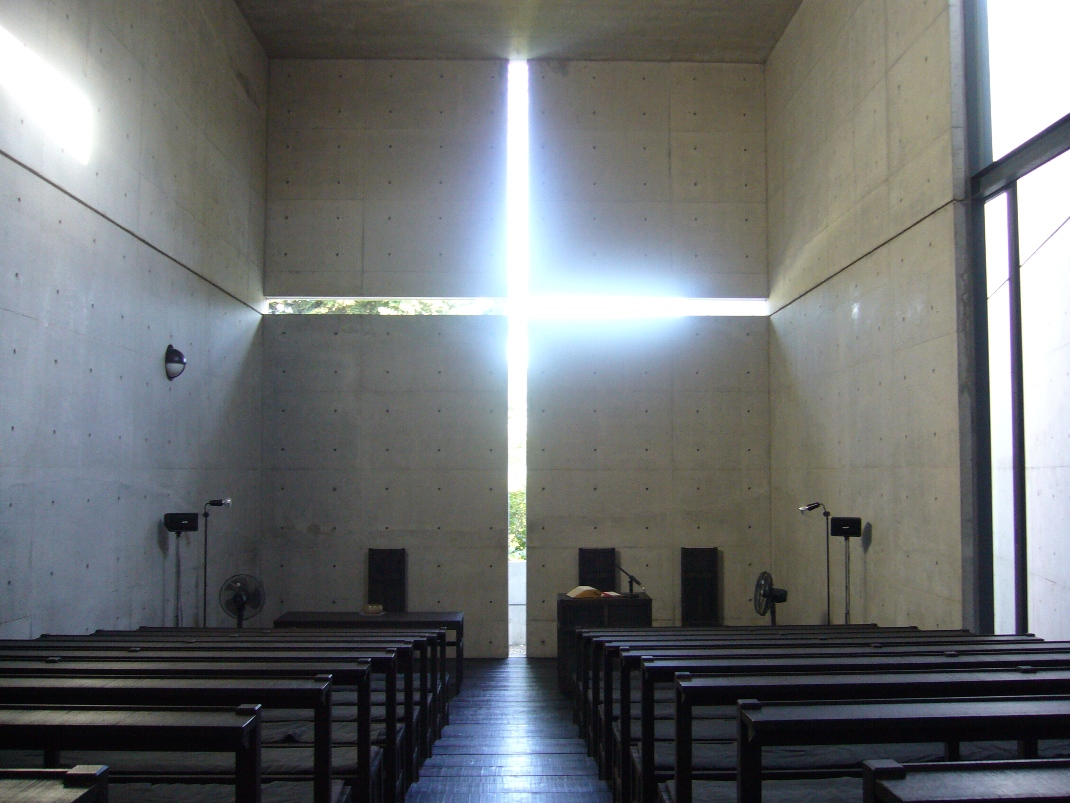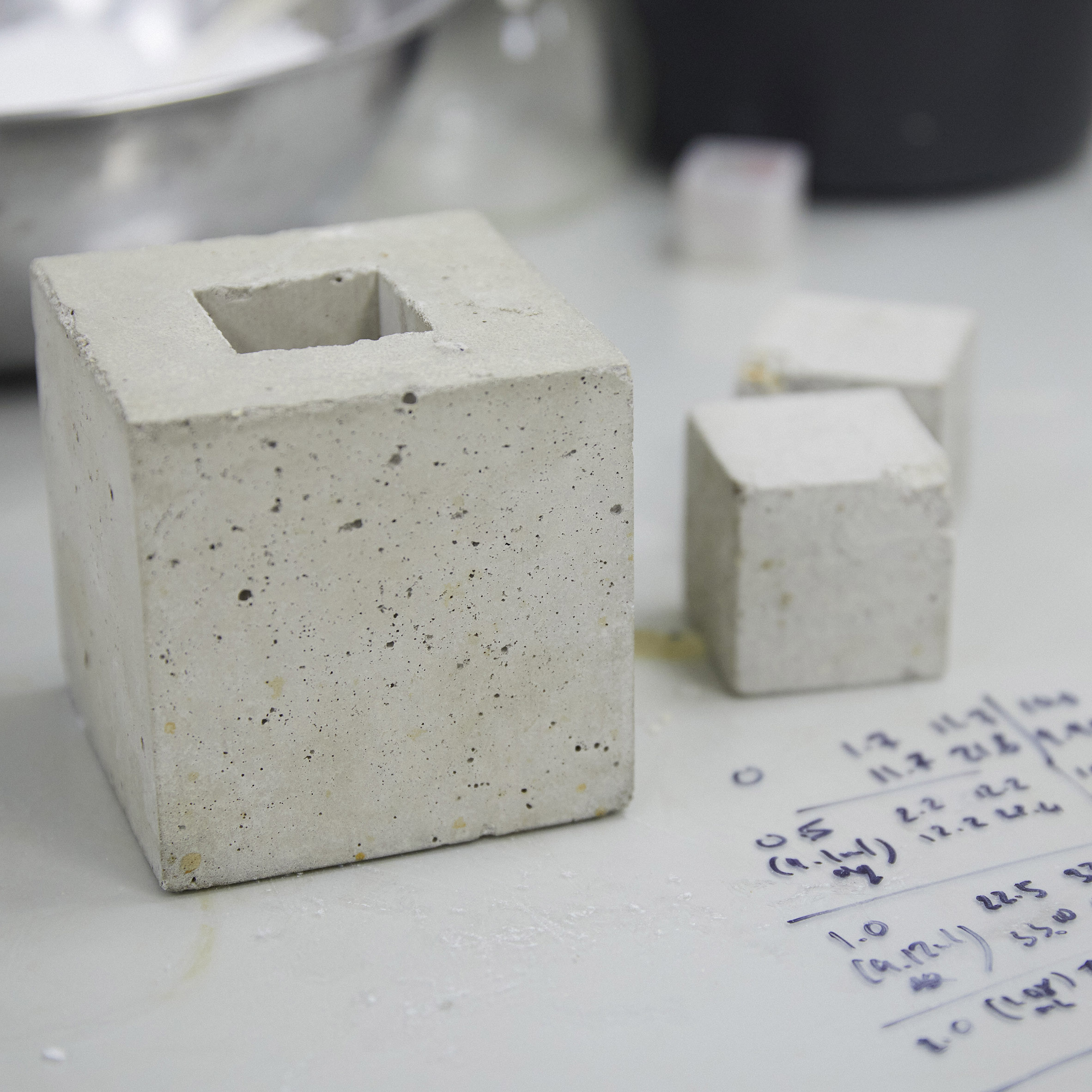Londoners are no stranger to concrete: the city seems to contain both the best and worst instances of structure made from the substance. Standing alongside the iconic complexes of Southbank and Barbican are drab municipal and local authority buildings waiting for a much-needed renewal.
Such range is testament to concrete’s fame as the most commonly used man made material on the planet. At the same time, it is the single most polluting building material in the world.
One principal reason for its ubiquity is that the base elements of concrete can be found almost anywhere at relatively low price. Water, aggregates (i.e., gravel, sand, or rock) and cement combine to form a cheap, reliable and malleable substance used in many of the largest civil engineering projects.
Church of the Light, Tadao Ando, 1989 (Wikimedia)
We can thank concrete for many of our modern bridges, housings, artistic institutions, and dams. Brutalist architects saw concrete as the crucial basis for their ideals of mass social housing, resilient public institutions, and urban renewal. Japanese architect Tadao Ando, one of concrete’s deftest users, can turn grey and blank concrete walls into canvases for introversion and reflection.

Robin Hood Gardens, currently being demolished in Poplar, London (Wikimedia)
However, neglect and deterioration together damage the aesthetics of many concrete projects that were already challenged at their inception. There is also a matter of changing taste: these grey buildings become a regular fixture on the many ugliest buildings lists. Even so, the substance is still everywhere, with 30 billion tonnes used each year, albeit often hidden in the frame of newbuilds.
The other, arguably more significant, threat to concrete is its environmental footprint. Cement is resource-intensive to produce. Energy from fossil fuel is used to burn and ground a mixture of limestone and clay, which also emits CO2 as a chemical reaction to heat.
The cement industry alone generates approximately 8% of global CO2 emissions, not too far behind agriculture at 12%. Concrete consumes roughly one tenth of global industrial water usage. Its value chain includes limestone quarries, cement factories, and intensive transportation – all of which contribute to air pollution.
Cement (Wikimedia)
With the world on a drive to decarbonise and avoid the worst effects of the climate crisis, there has been a push to innovate in the industry. The Global Cement and Concrete Association has its roadmap to reach net-zero emissions by 2050.
The focus so far has been on cement, specifically finding alternatives or cutting emissions in the production process, although there has yet been any substitutes who can deliver similar levels of performance and scalability.
One of most promising candidates so far is Seratech’s carbon-neutral concrete, whose key innovation is in the partial replacement of cement with a type of silica made from captured industrial emissions and the carbon-absorbing mineral olivine. With up to 40% of cement content actually being carbon negative and offsetting emissions from the other 60%, the material is said to be carbon neutral overall.
Promising to be low-cost and scalable, Seratech won the 2022 Obel Award, an international prize honouring ‘outstanding architectural contributions to human development’. Other experimental approaches include entirely replacing cement content with algea-grown limestone.
Seratech carbon neutral concrete (credits: Seratech Labs)
Alongside lab-based pursuit for innovation, another race is also taking place at considerably slower velocity: reforming formal standardisation established over decades. At the moment, there are 1,903 construction standards regarding the use of concrete that can be found through the British Standard Institute search portal.
Many of these were established after problems occurred, delineating a rigorous performance baseline that concrete made with alternative cement must adhere to. This is naturally necessary but comes along with a lengthy and expensive testing process.
One noteworthy amendment that was promised to come out in 2023 is the expansion in the concrete code, BS 8500, to allow for cement blended from low-carbon constituents like Ground Granulated Blast-furnace Slag (GBBS), fly ash and natural pozzolana (and potentially Seratech in the future). These cement flavours are already widely used in Europe, but the revision would finally make them available in the UK marketplace after years of assessments conducted by the Mineral Products Association.
The concrete story is complex and multi-faceted, but their sheer existing quantity means we are entangled with it for the foreseeable future. One key challenge in the upcoming years is to enable the rapid adoption of innovative technology through investment and bureaucratic reforms. It is exciting to keep close eyes on these latest developments and see what the future could bring.




